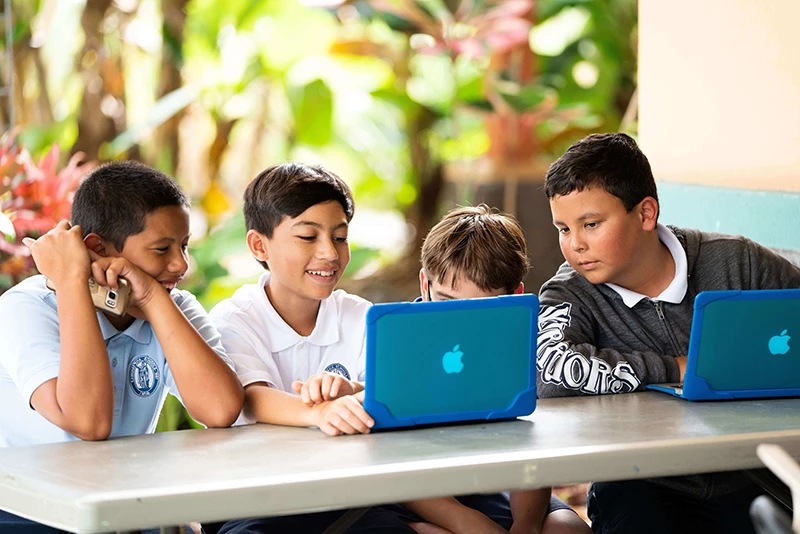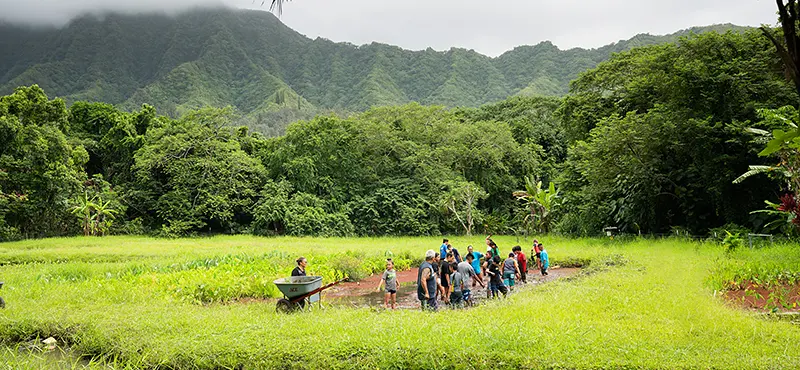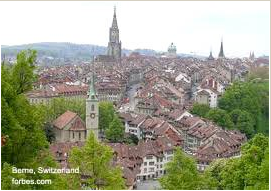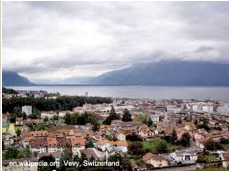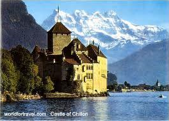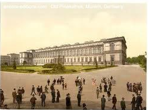Pauahi’s European Travel Journal 1875-1876
Switzerland and Munich
Sources: Pauahi by George Kanahele, Chapter 5: Revelations of an Odyssey
Student transcriptions from Ka Moi, 1935-37
Transcriptions of Dani Gardner, KSG 1961
Please cite: Kamehameha Schools Archives when using information from this website
Disclaimer: all images of Europe are from the Internet to enhance the text
Berne, Monday 15
We left Heidelburg about 9 o’clock this morning and have been traveling the whole day. We changed trains at Basle, the commence[ment] of the Swiss[e] territory, and got into a different kind of carriage from the German. I like the arrangement of their carriage[s] very much, an improvement on the railway carriages of the other nations of Europe as well as America[n], I think. We traversed through a good part of the kingdom of Baden and stopped for a little while at Carlsruhe, the capital of the kingdom. Some of the way the scenery was very fine. The railway for some miles ran along the sides of the mountains, looking down on a vast extent of country, villages scattered here and there, and the Rhine meandering along calm and peaceable —and mountains everywhere. It was after dark when we arrived here and found a card from Mr. Williams, saying he would see us at 8 o’clock tomorrow morning.
Tuesday 16
It seems that our friend had arrived at this hotel, the “Hotel Barnehoff,” at the same time that we did last evening, but did not wish to disturb us—and this morning we met at the coffee room, and we were happy to see each other again. After we had breakfast[ed] together, we sallied out, he acting as our cicerone. We walked through the principal street, and it was our good fortune to see a “fair” going on. The middle of the streets were occupied by booths in which were exhibited all manner of goods and productions, people selling and crying [buying]. The scene was extremely odd and interesting. We walked to the great fort [pit] in which is kept the expense of the city, some half a dozen bears. This animal being the emblem of the city. We next visited a church [the church of ___ the principal doorway of which, or rather the arch over the doorway were __.] In the afternoon we took a cab and drove around the city and out a little ways on a high ground where we not only had a fine view of the city but also of a range of the Bernese Alps. The Jungfrau, the Matterhorn, the Cigle and several other peaks, all covered with snow, and looking most magnificently in a clear sky.
Clarens, Puisse [Suisse], Wednesday 16
We had a pleasant journey today from Berne—but the country begins to put in a wintry appearance. At Vevy, Willie Williamson met us—his father was delighted to meet him. He has grown some, but not as much as I expected—but looked well. William Williamson [Mrs. Williams] and Mary gave us a hearty welcome [hello], and we were [feel] happy to be once more with friends, especially those with whom we can converse in English, for we feel more and more to [the] disadvantage of not knowing the German language. Our friends have very delightful apartments at the “Hotel Rosy,” over the lake of Geneva—such lovely views from here of the lake—the opposite mountains of Savoy, the valley of the Rhine, and behind a range of mountains which extends the whole length of the lake dotted with villages and between them are vineyards, all divided off in small patches and terraced most beautifully.
Thursday 18
Today we visited with our friends, the castle of Chillon made famous by Byron in his poem of the Prisoner of Chillon. It is still in good state of preservation, and looks as if it might stand several hundred years or more. We visited the rooms where the prisoners slept the night before execution […] and the place where the bodies were [are] thrown out on the lake, and the rooms where the [this] celebrated prisoners were confined for many years. The pillars to which he was tied and the place where he sat near this was dented, worn by constant use, as also was the place where his chain dragged the ground. The pillar was disfigured by visitors who cut their names on it. Among them we noticed Byron’s. Returning, we stopped at Montreux and did some shopping.
Sunday 21
On getting up this morning it was snowing, (the first time I have seen anything of the kind,) and I enjoyed seeing the tops of houses, trees, and the ground gradually covered with snow, and in a little while everything was white. It looked for all the world like frosted sugar—it was a beautiful sight. This afternoon we walked over to another pension to call on Mrs. Deetjin and Miss Geerkin, sisters of Mrs. Pfluger. Yesterday it rained all day so we stayed indoors. The day before we drove out in the afternoon to Vevey and did some shopping. We have passed nearly all of our time [with the Williams] in their salon—except the forenoons of the two days which we devoted to writing to friends at home. Tomorrow we leave with regret(s) this charming place for Munich via Zurich.
Zurich, Monday 22
Our friends came on with us as far as Lausanne and there we departed, they returning to Clarens while we came on here. We made the acquaintance of a lady who came into our compartment in the railway carriage today, at Nêuchatel. As she spoke English, we found her society very pleasant. She was intelligent and clever, and I was glad to learn that she was going to the same hotel that we were, the “Hotel Baurenville” where we are now. As we arrived after dark, we saw nothing of the city.
Tuesday a.m.
We have just taken a walk through some of the streets and over the handsome bridge to the opposite side of the river, and went through the market—a most interesting sight; all the selling was done by women. There seem to be many new buildings going up.
Munich, Wednesday 24
We left Zurich yesterday morning at [A.M.] 10 o’clock. At the station I saw our friend, who was also bound for Munich. We got into the same carriage, a small one with only seats for three. All outdoors were covered with snow several inches deep—on every side, snow, snow, snow, a novel sight indeed to me, and the sky was heavily laden. At 12 o’clock we arrived at the town of Romanshorn on the lake of Constance—then took the steamer for Lindau, on the opposite side of the lake, and in the Bavarian dominion. It was fearfully cold on deck, but I managed to be there as much as possible to see the views. The Bavarian Alps were in the mist and snow, but along the shore of the lake it was clear so that the villages could be seen but were almost buried in snow. During a conversation, I had on deck with an Austrian friend, I asked her, her name and was surprised when she gave it to me, as Countess Bombelles. She then wrote on a piece of paper her full name with that of her country in order I might not forget it and handed it to me. I give it here as Countess Bombelles, Né [ni] Countess Dreskovich [Duskovich] Croati-Friedau I told her my name and where I was from. She said she had heard often of our islands and wished to visit them. When on the way here our conversation was mostly about Austria. She told us many things which were not very flattering to her countrymen. She also gave us many hints about traveling and hotel life which we were very glad to know, altogether her society was very agreeable to us and we generally managed to keep together and travel in the same compartment together. At 1:30 o’clock we landed at Lindau and expected to have had our luggage over handed [hauled], but they did not open them at all, so we hastened to the railway station and got into the train. In a few minutes we were on our way to Munich—traveled the whole day, although stopped for a few minutes, only at the way station[s], and at 8 o’ clock at night arrived here pretty well tired out and cold. As we had telegraphed for a room, we found on arriving our room heated and comfortable
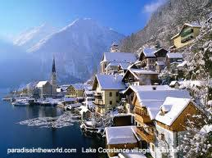
Thursday 25
Today or rather this morning we went to the “Old Pinakothek,” a find building, which contains paintings mostly of the 14th and 15th centuries, several by the old masters—Rubens, Corregio, Titian, Rembrandt, Murillo, etc. Some of them were very fine, but the greater portion to my poor judgment were ordinary. We spent a greater part of the morning at this gallery (from 10 to 2) and as there are 1400 or more pictures in it, I can not say that our inspection of them was satisfactory—time was too short. We had to hurry through to see them all before the time for shutting up, which was at 2 o’clock. From there we drove to the “Baron Schack(o) Collection” of modern pictures, copies of the great Venetian and Spanish masters.
Friday 26
This morning when we started out it was snowing, about as cold as it was yesterday—took a carriage and drove to the “New Pinakothek,” which contains exclusively modern pictures, and I think they are by far the finest paintings. There are 11 rooms covered to the ceiling with pictures, and one ought to take several days and plenty of leisure to do justice to these works of art and skill. They are excellent. On the other side of this building are frescoe paintings, but they looked as if they have suffered exposure to the atmosphere. After 2 o’clock we drove to the National Museum, a most wonderful place, which contains as Baedeker’s says, “a magnificent and unrivaled collection of objects illustrative of the progress of civilization and art.” This evening we went to the opera and heard Wagner’s opera of “Lohengrin.” It was well performed. The orchestra good, but I must say I do not appreciate Wagner’s music. It is too monotonous for my taste.
Friday 26
Went to look at a gallery of engravings and afterwards went to the porcelain painting room from there to the Glyptothek, a building in the Ionic style, with a porch of eight columns and distance about half a mile from the old Pinakothek. It contains a collection of ancient sculpturers and fills 13 rooms. I noticed two statues in black and white marble—the first I have seen of the kind. From this we again visited the old Pinakothek, and had another look at the works of these old masters. In the afternoon we took a walk through the different courts of the palace, and in one of the courts with three sides there ran along on two sides an open arcade, adorned with frescoes of landscape and historical subjects. The royal palace is an immense structure with many courts and orders and fountains. We next turned into the Ludwig Strass[e] and walked up towards the Siegesthor or Gate of Victory, a magnificent gateway, an imitation of the triumphant arch of Constantine of Rome. On the top is an allegorical figure of “Bavaria” in a Guardia [quadriga] drawn by lions. We saw the same group in one of the “Pinakotheks” in plaster. We turned in on the way and went inside a church called the “Ludwigskirche.” The interior was very fine—the high altar is covered with the finest fresco of the “Last Judgement.” On the vaulting of the principal choir is another beautiful fresco and several side chapels in the aisle. The two finest statues in the collection are “Paris and Adonis”—the former the work of Canova—the latter that of Thorwaldsen [Thorwalder].







